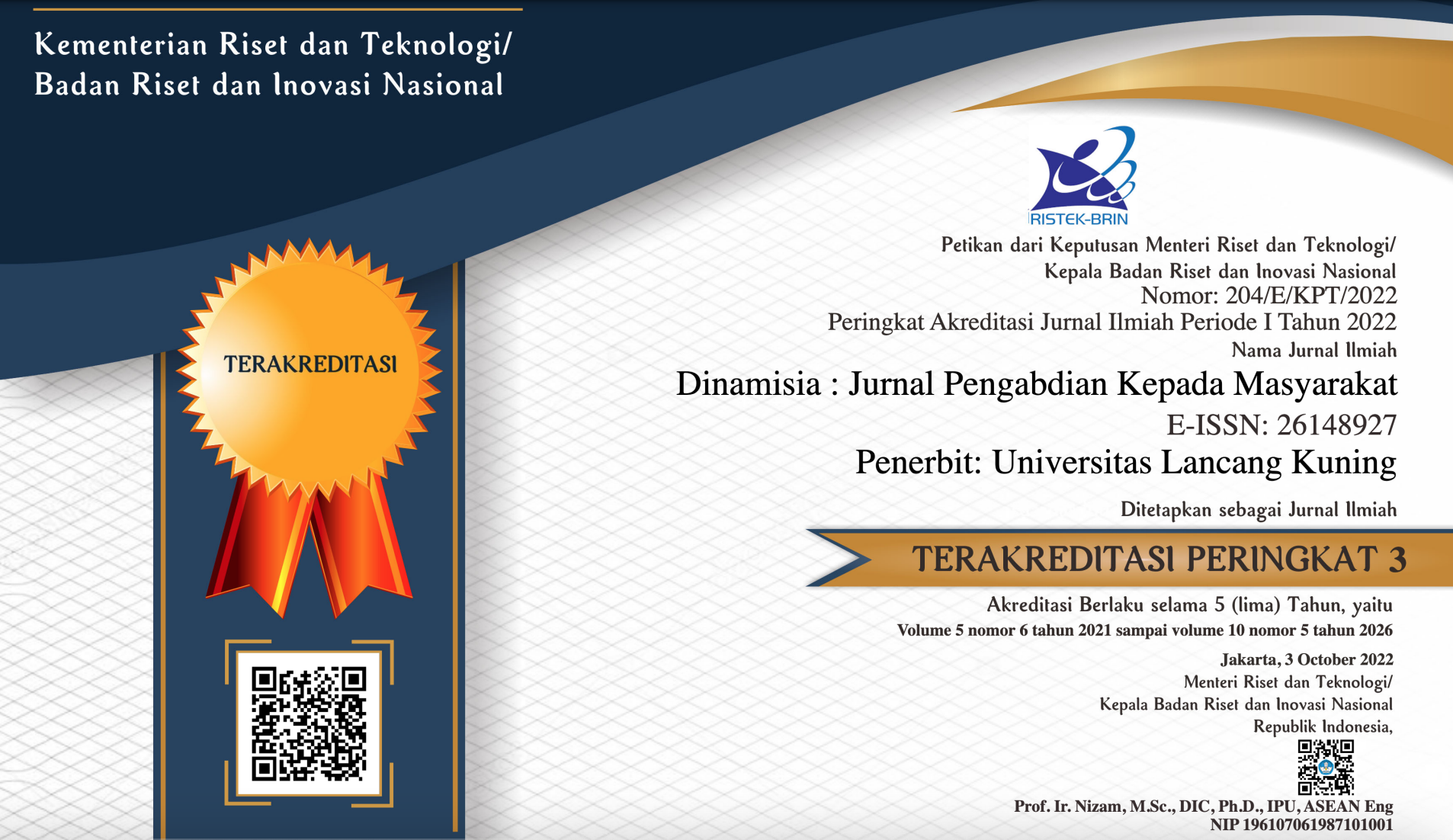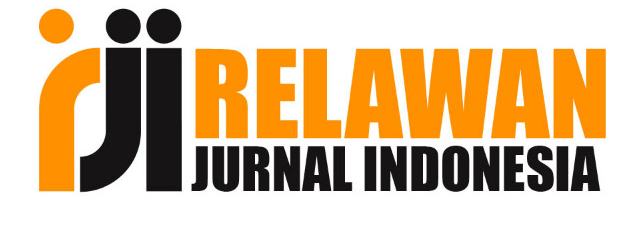Community-Based Kitchen Wastewater Management: Assessing Knowledge and Attitudes towards Simple Eco-Friendly Grease Trap (GASTDAR) Design - A Case Study along Bincau Irrigation Embankment
Pengelolaan Limbah Cair Dapur Berbasis Masyarakat: Evaluasi Pengetahuan dan Sikap terhadap Desain Perangkap Lemak Ramah Lingkungan (GASTDAR)- Studi Kasus di sepanjang Bantaran Irigasi Bincau
Abstract
Kitchen wastewater management near Bincau Irrigation Embankment is a major environmental issue. To address this concern, we held a community engagement program to teach wastewater management and install a floating, four-chamber Simple Grease Trap (GASTDAR). Fats, oils, Total Suspended Solids (TSS), and Chemical Oxygen Demand were measured before and after GASTDAR deployment to assess water quality. GASTDAR decreased lipids and oils 64.3%, TSS 53.7%, and COD 55.7%. Restaurant owners and employees' wastewater management knowledge and attitudes increased dramatically. Finally, GASTAR's unique design reduced the environmental impact of kitchen wastewater, improving the water ecosystem near the Bincau Irrigation Embankment.
Downloads
References
Baul, T. K., Sarker, A., & Nath, T. K. (2021). Restaurants’ waste in Chittagong city, Bangladesh: Current management, awareness on environmental hazard and perception towards potential uses. Journal of Cleaner Production, 292, 126073. https://doi.org/10.1016/j.jclepro.2021.126073
Boess, S., Silvester, S., de Wal, E., & de Wal, O. (2018). Acting from a participatory attitude in a networked collaboration. Proceedings of the 15th Participatory Design Conference: Short Papers, Situated Actions, Workshops and Tutorial - Volume 2, 1–6. https://doi.org/10.1145/3210604.3210642
Hasan, S. E. (2004). Public Awareness Is Key to Successful Waste Management. Journal of Environmental Science and Health, Part A, 39(2), 483–492. https://doi.org/10.1081/ESE-120027539
Hussin, M. S. F., Shamsuddin, M. A., Jumaidin, R., Zakaria, A. A., & Jenal, N. (2018). Portable Grease Trap for Wastewater Management System: A Conceptual Design Approach. Journal of Advanced Research in Fluid Mechanics and Thermal Sciences, 49(1).
Jayana, R., Nisa, K., & Pusphaningrum, S. A. (2021). Uji Kualitatif Penurunan Kadar Lemak, Kandungan Padatan, dan Kekeruhan Pada Air Limbah Domestik Dengan Grease Trap Bar Screen Filtration. Jurnal Pengendalian Pencemaran Lingkungan (JPPL), 3(1), Article 1. https://doi.org/10.35970/jppl.v3i1.602
Kjelland, M. E., Woodley, C. M., Swannack, T. M., & Smith, D. L. (2015). A review of the potential effects of suspended sediment on fishes: Potential dredging-related physiological, behavioral, and transgenerational implications. Environment Systems and Decisions, 35(3), 334–350. https://doi.org/10.1007/s10669-015-9557-2
Nidzamuddin, M. Y., Juffrizal, K., Mustapha, F., Zulfattah, Z. M., Tan, C. F., Taha, M. M., Hidayah, I., & Hilwa, M. Z. (2015). Case study of the effectiveness of passive grease trap for management on domestic kitchen waste water. AIP Conference Proceedings, 1660(1), 070024. https://doi.org/10.1063/1.4915742
Olaniran, E. I., Sogbanmu, T. O., & Saliu, J. K. (2018). Biomonitoring, physico-chemical, and biomarker evaluations of abattoir effluent discharges into the Ogun River from Kara Market, Ogun State, Nigeria, using Clarias gariepinus. Environmental Monitoring and Assessment, 191(1), 44. https://doi.org/10.1007/s10661-018-7168-3
Tommaso, G. (2011). 26—Effluents from the food industry. In J. Holah & H. L. M. Lelieveld (Eds.), Hygienic Design of Food Factories (pp. 606–622). Woodhead Publishing. https://doi.org/10.1533/9780857094933.5.606
Van Hulle, S. W. H., Ghyselbrecht, N., Vermeiren, T. J. L., Depuydt, V., & Boeckaert, C. (2012). Individual treatment of hotel and restaurant waste water in rural areas. Environmental Technology, 33(6), 653–661. https://doi.org/10.1080/09593330.2011.587025
Yau, Y.-H., Rudolph, V., Lo, C. C., & Wu, K.-C. (2021). Restaurant oil and grease management in Hong Kong. Environmental Science and Pollution Research, 28(30), 40735–40745. https://doi.org/10.1007/s11356-018-2474-4
Yurbani, M., Pendahuluan, I., & Selatan, K. (2021). Pemanfaatan Irigasi Dan Sungai Sebagai Sumber Wisata Lokal Air dan Kuliner Desa Bincau.
Yurnalisdel. (2022). Analysis of the Impact of Liquid Waste on Environmental Pollution. Formosa Journal of Sustainable Research, 1(6), Article 6. https://doi.org/10.55927/fjsr.v1i6.1951


















